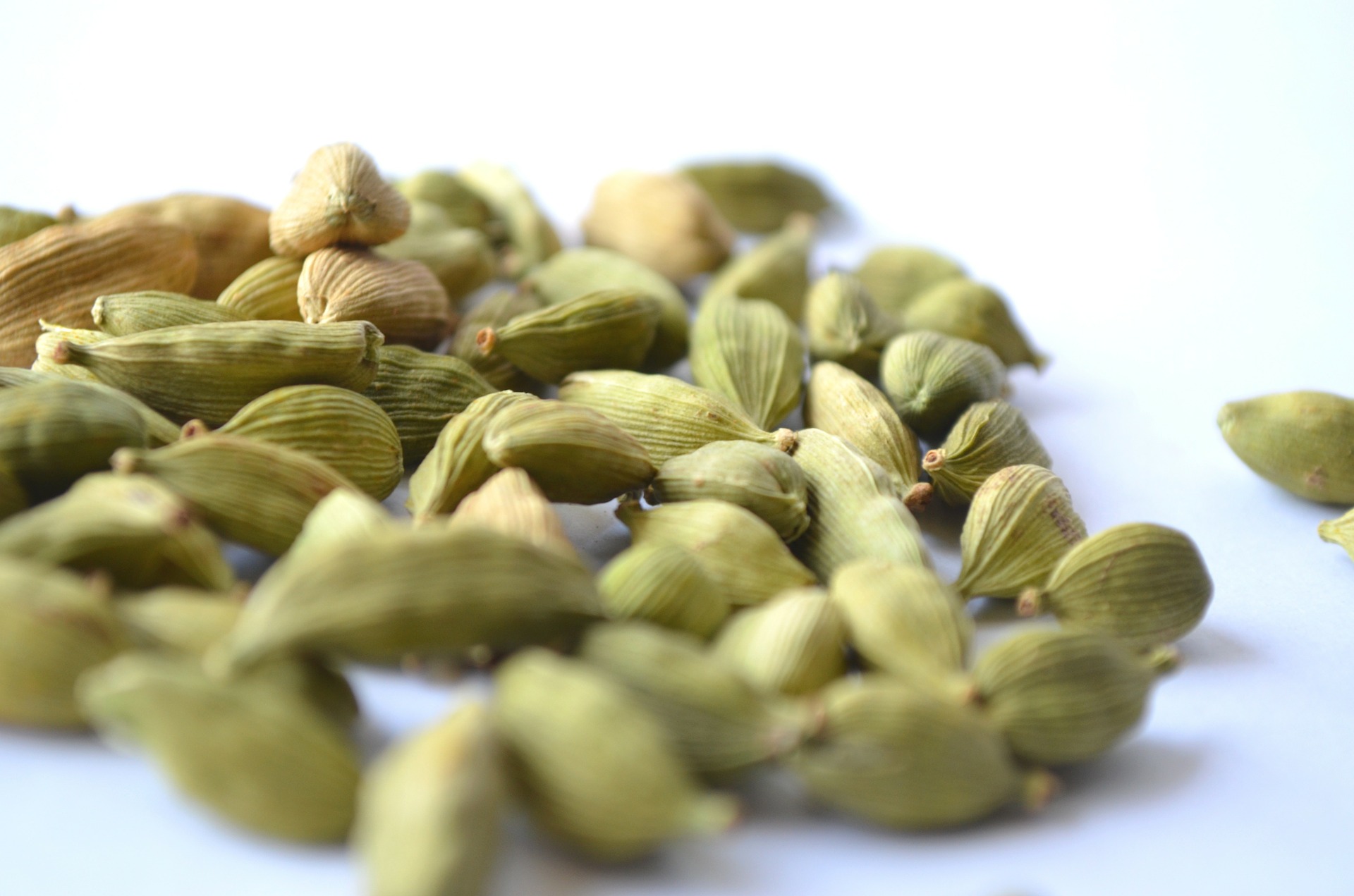 According to Ayurveda, meals should contain all 6 tastes, salty, sweet, sour, astringent, bitter, and pungent. This is not always an easy task, so one way to make this happen is to be a master of spicery. In the next few weeks we’ll cover six of the top spices used in Ayurveda. You may already use some of these spices, but if not, give them a try. We’ll begin, as we should, with the Queen of Spices, Cardamom.
According to Ayurveda, meals should contain all 6 tastes, salty, sweet, sour, astringent, bitter, and pungent. This is not always an easy task, so one way to make this happen is to be a master of spicery. In the next few weeks we’ll cover six of the top spices used in Ayurveda. You may already use some of these spices, but if not, give them a try. We’ll begin, as we should, with the Queen of Spices, Cardamom.
But before we get started, I have to say that having never used this spice (or at least consciously), until just a few years ago, I found it to be one of the most confusing spices ever. First of all, it comes in pods, seeds and ground. It also comes in black and green (and other colors that are not so available). Other than ground, it seemed difficult to find and when you did find it, it is really expensive.
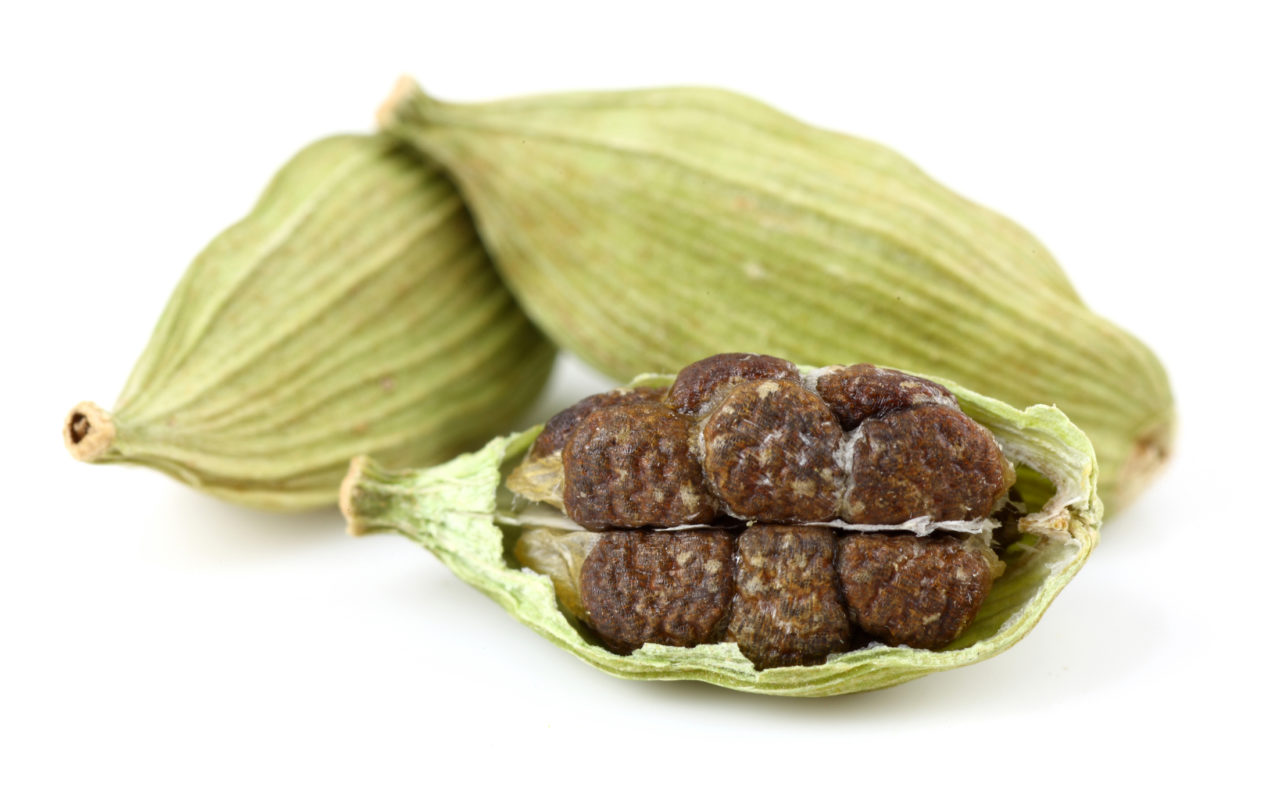
My first experience with the pod was at my friend Blair’s house. He was teaching me how to make Chai tea and I was given the pleasure of crushing the large cardamom pods with a pestle and mortar. We were making chai for about 35 people…really, how hard could that be? Well, I have to say my arm about fell off.
So of course I went home and a few days later wanted to try my skill at making chai on my own and could not find the pods. I finally found a tiny box of roughly 5 green pods and paid around $6 for it. Whoa! Then for a while I used the pre-ground cardamom and of course used way too much. Finally I now shop at an Indian store, Taj, in Plano, and buy the pods by the bag.

One of the most expensive spices from the beginning of time, cardamom has always been able to hold its value due to its special medicinal and culinary value. Cardamoms rich and varied content comes from more than 25 volatile oils, plant compounds that impart fragrance. The most medicinally active of the oils is the antioxidant cineole. Cardamom has been used to treat an impressive variety of health problems, including heart disease, respiratory ailments such as asthma, bronchitis, colds, and flu, and digestive problems such as bad breath, colic, constipation and diarrhea. The reason for cardamoms powerful anti-inflammatory and anti-spasmodic agents are these oils that work together to improve digestion.
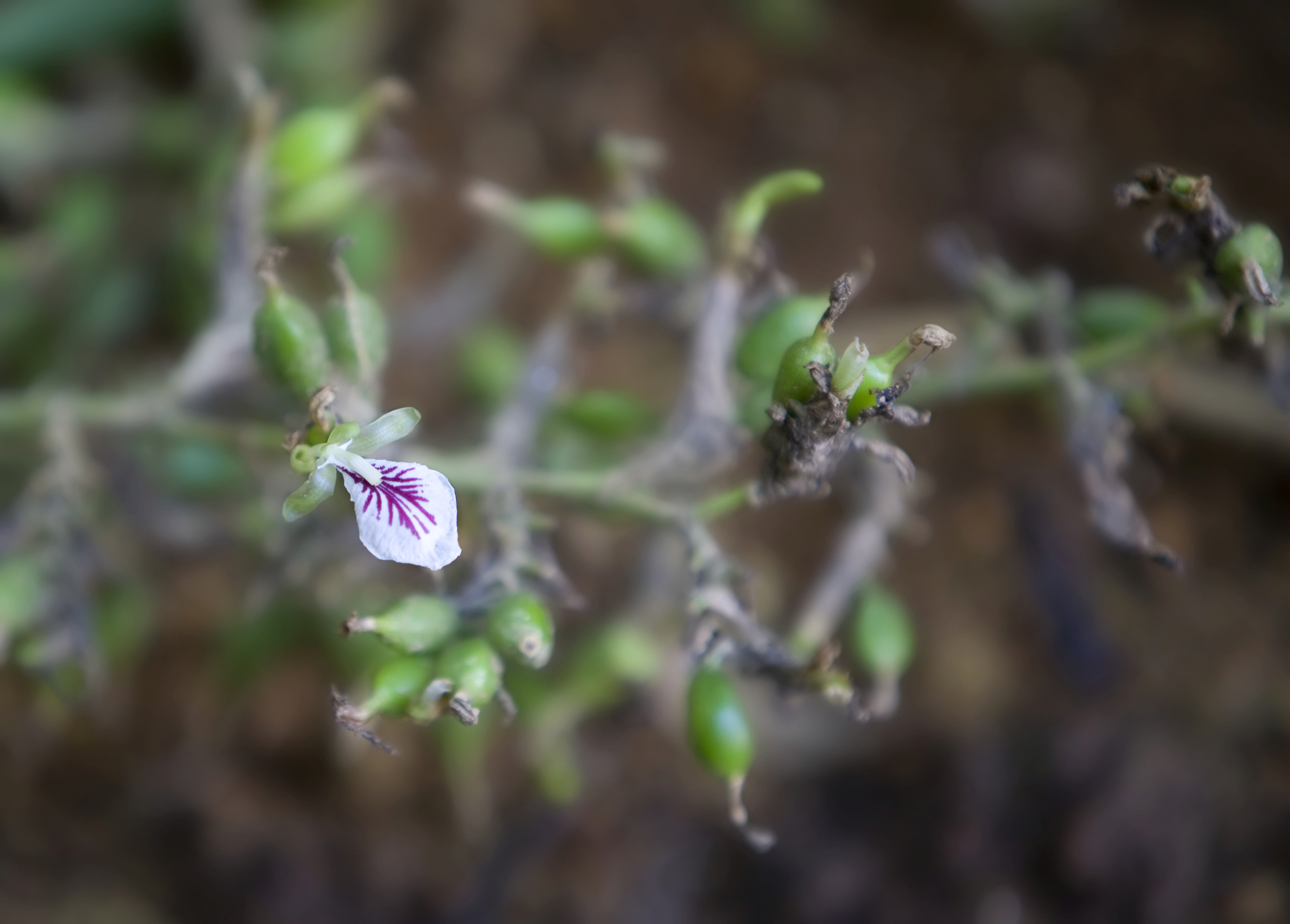
Cardamom belongs to the family of ginger plants. Cardamom plants have been grown in southern India for millennia and spice traders searched the mountainous rainforest of the Cardamom Hills looking for the pods growing wild on the roots of six foot cardamom bushes. These large bushes are recognizable because of their yellow and blue flowers.
Romans loved using cardamom in their dental care as it is one of the only spices that can dissipate garlic breath. This sweet spice is also grown in Sri Lanka, Guatemala, Mexico and Indonesia as well as other areas of southern Asia. Two different kinds of cardamom pods are used in Indian cooking, black and green.
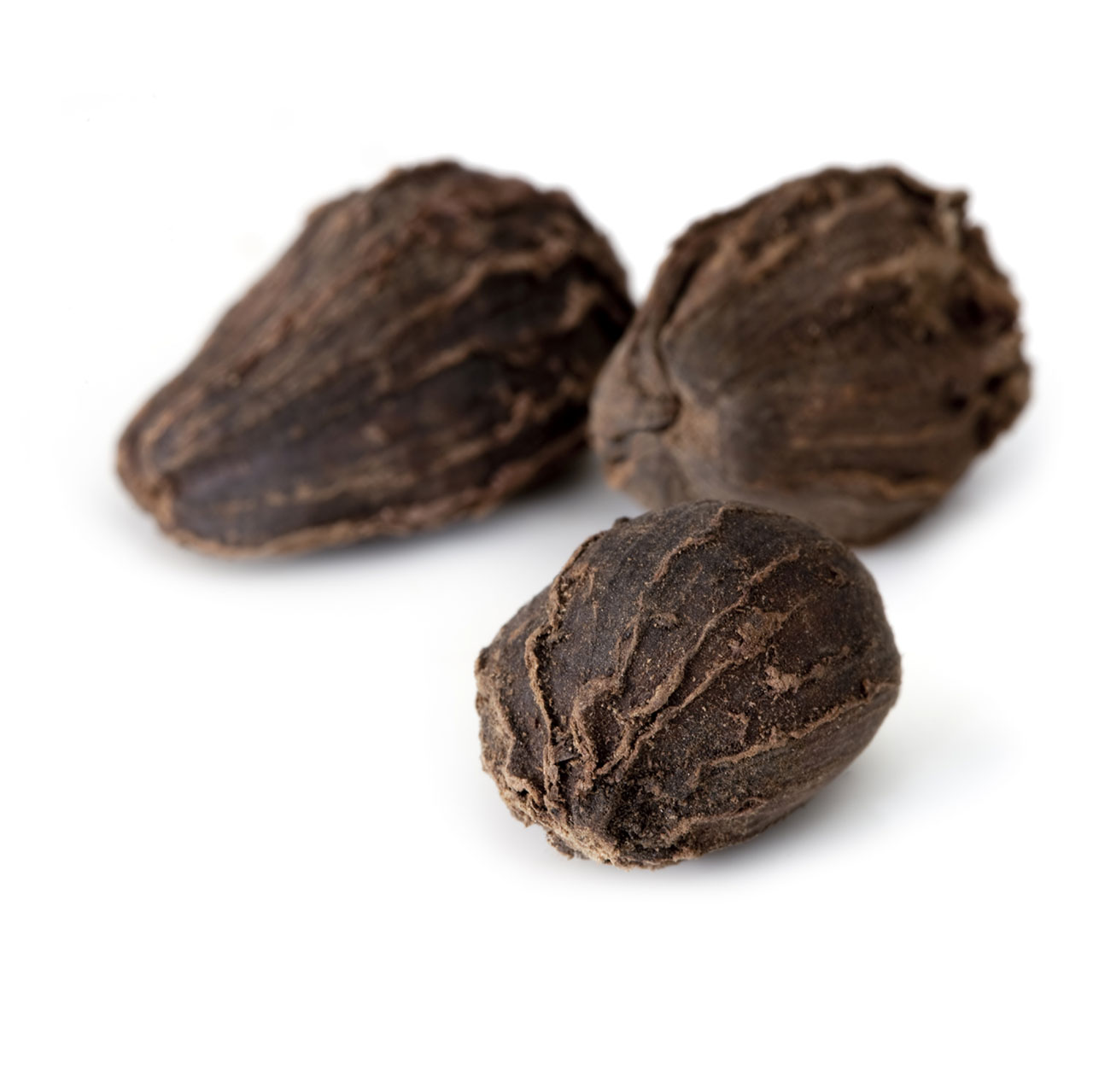
Black cardamom pods are larger and according to Ayurveda, the seed is aromatic, sweet, tasty and appetizing; it aids digestion and is a stimulant.
Black cardamom subdues Mucus (Kapha), Bile (Pitta), and Wind (Vata). It increases stomach fire and stops hemorrhaging and vomiting. Black cardamom also cures stones of the kidney and gallbladder. Warm and light in nature, it is a carminative and a diuretic. Large cardamom seeds cure disease and pains of the anus and poisonous bites. Black cardamom pods are used in Indian rice and meat dishes. They are harder to find as they have limited availability.
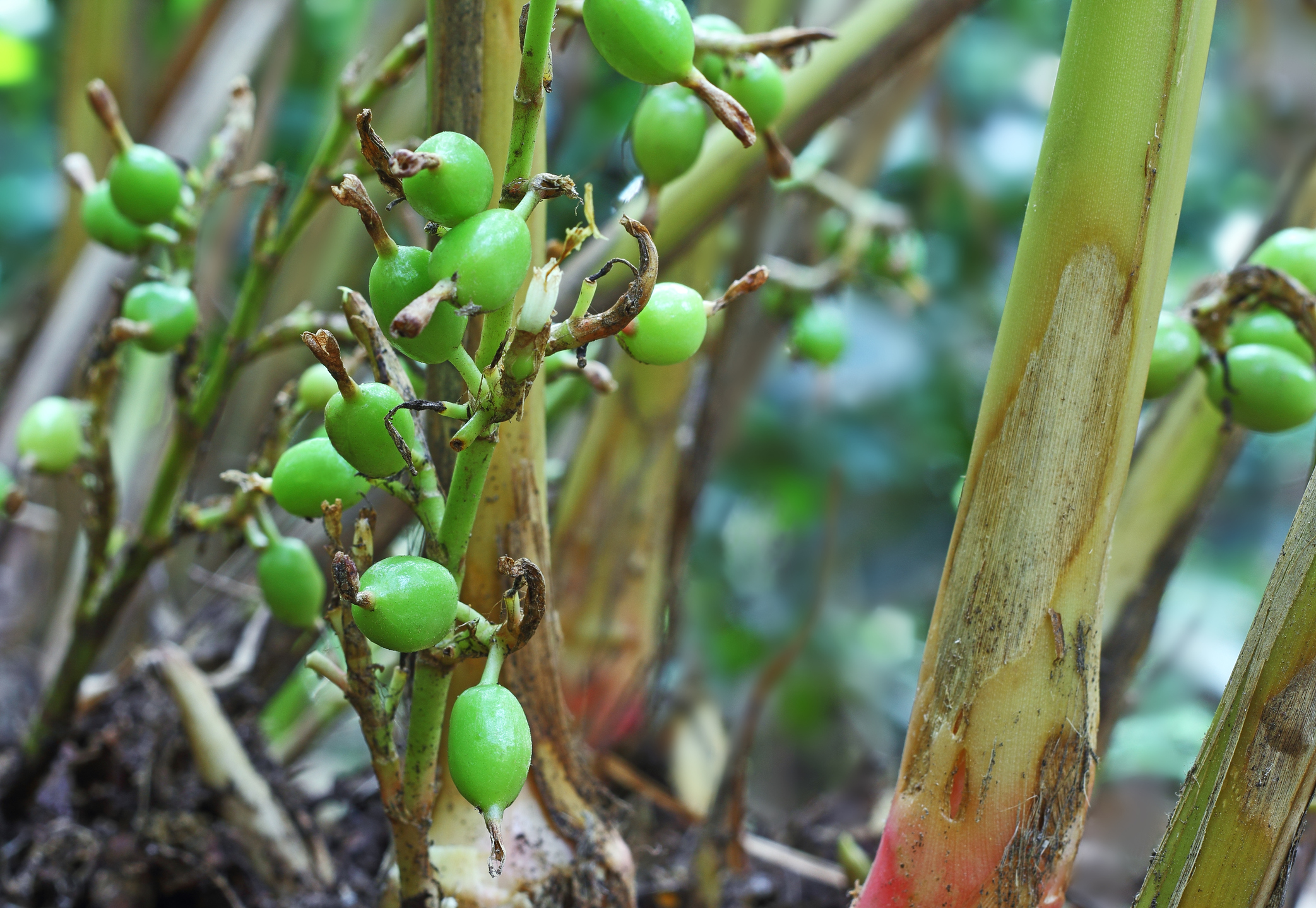
The plant of green cardamom is an evergreen, grows in shady places, and a sea climate is the most suitable. Green cardamom is smaller than black cardamom and is used primarily in sweet dishes and drinks. According to Ayurveda, the seeds of green car
damom are warm, light and dry in nature. Green cardamom has a superb aroma much stronger and more refined than black cardamom. Green cardamom stimulates Bile (Pitta) and soothes coughs (Kapha) and wind (Vata). It cleans the mouth and the mind. Green cardamom curs piles, venereal disease, kidney and bladder stones, skin rashes and vomiting of any kind. Cardamom is used in main dishes as well as in desserts.
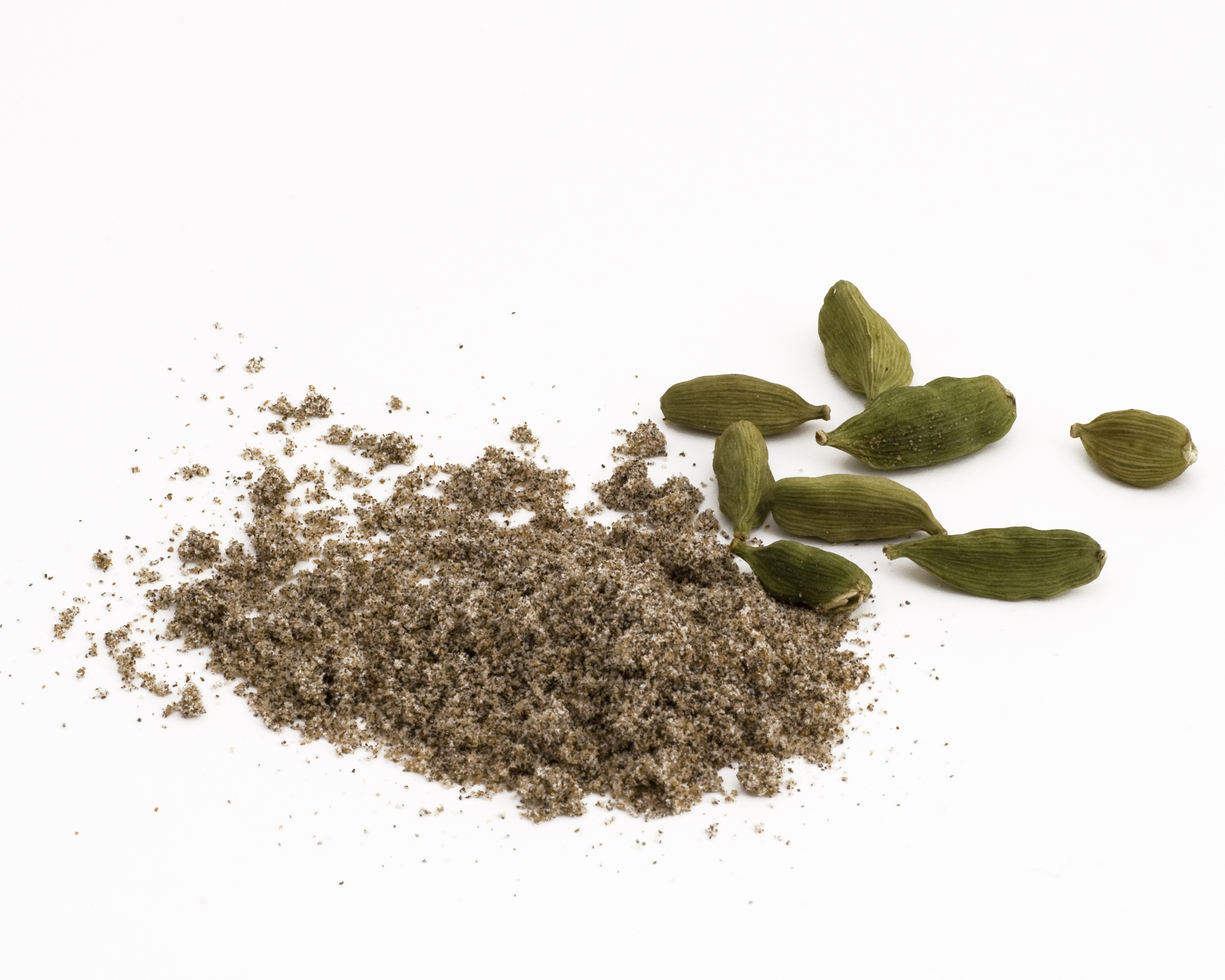
Cardamom comes ground and in seeds and is found in most supermarkets, but cardamom pods are a different story; you have to go to an Indian market, specialty spice shop, or online retailer to find. The best quality pods are small, with a gnarly oval shape and a paper like husk. They are lime green in color. Look for pods with a vivid, even color; they should not be pale or bleached. Pods that are spilt open at the corners, indicate that they are were harvested late and will have lost some of the volatile oils. Don’t buy white cardamom as they have been bleached. If you can’t find pods, buy seeds rather than ground cardamom. When you buy seeds you can help retain flavor by grinding them only as needed. Green cardamom seeds are actually brown in color but they are called green cardamom. They should feel slightly oily to the touch and have a scent resembling eucalyptus with a hint of mint and pepper. Intact cardamom pods will keep for two years in an airtight container away from sunlight. Seeds will keep up to a year under the same conditions; ground cardamom has a shelf life of about six months.
The taste starts out as sharp and bitter and then mellows to a warming sweet taste as it cooks. Freshly ground is far superior to the pre-ground cardamom, so it is worth it to grind. The flavor and aroma is lost very quickly so muscle up and do it fresh.
